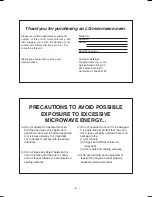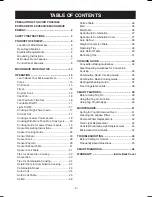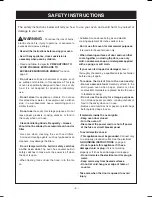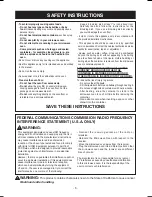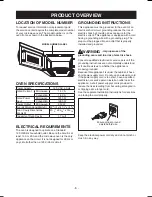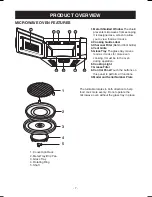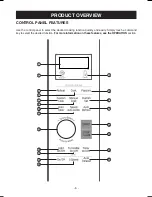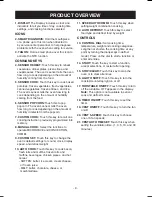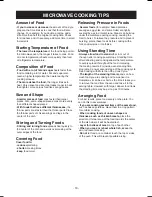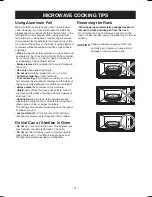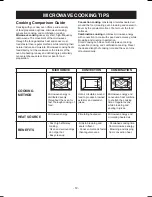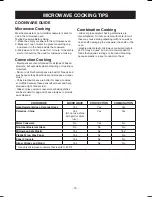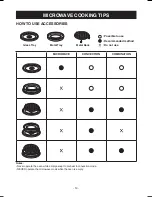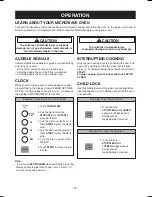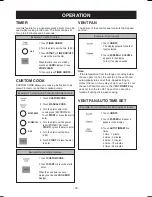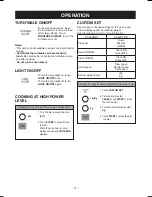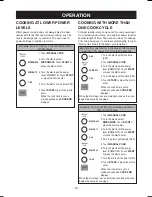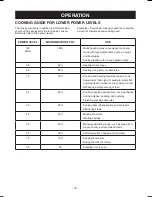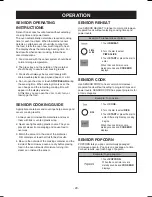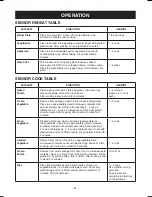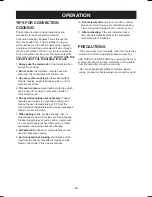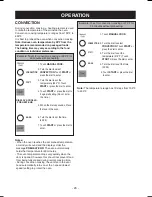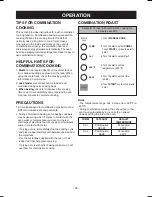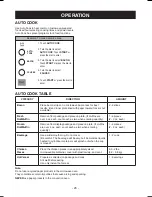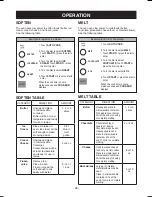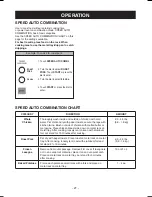
- 12 -
Cooking Comparison Guide
Cooking with your new oven offers a wide variety
of food preparation options: microwave cooking,
convection cooking, and combination cooking.
Microwave cooking
uses very short, high-frequency
radio waves. The movement of the microwaves
through the food generates heat and cooks most
foods faster than regular methods, while retaining their
natural texture and moisture. Microwave cooking heats
food directly, not the cookware or the interior of the
oven. Reheating is easy and defrosting is particularly
convenient because less time is spent in food
preparation.
Convection cooking
constantly circulates heated air
around the food, creating even browning and sealed-in
flavor by the constant motion of hot air over the food
surfaces.
Combination cooking
combines microwave energy
with convection to cook with speed and accuracy, while
browning and crisping to perfection.
Timed cooking can be set with microwave cooking,
convection cooking, and combination cooking. Preset
the desired length of cooking time and the oven turns
off automatically.
MICROWAVE COOKING TIPS
MICROWAVE
CONVECTION
COMBINATION
COOKING
METHOD
Microwave energy is
distributed evenly
throughout the oven for
fast, thorough cooking of
food.
Hot air circulates around
food to produce browned
exteriors and sealed-in
juices.
Microwave energy and
convection heat combine
to shorten the cooking
time of regular ovens,
while browning and
sealing in juices.
HEAT SOURCE
Microwave energy.
Circulating heated air.
Microwave energy and
circulating heated air.
BENEFITS
• Fast, high efficiency
cooking.
• Oven and surroundings
do not get hot.
• Easy clean-up
• Aids in browning and
seals in flavor.
• Cooks some foods faster
than regular ovens.
• Shortened cooking time
from microwave energy.
• Browning and crisping
from convection heat.


